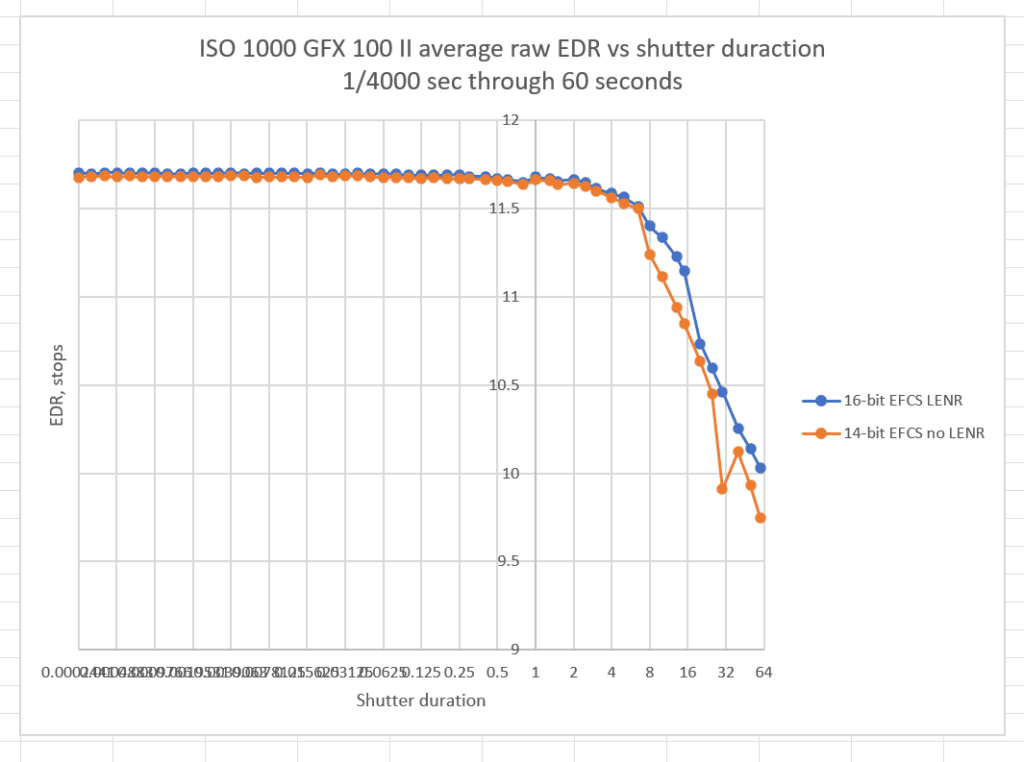This is the thirteenth post in a series of tests of the Fujifilm GFX 100, Mark II. You can find all the posts in this series by going to the Categories pane in the right hand panel and clicking on “GFX 100 II”.
Long Exposure Noise Reduction (LENR) is an optional feature of the GFX 100 II, and of most serious digital cameras. It is not particularly well understood by many photographers, so I’ll explain how it works.
When LENR is active, the camera makes a second exposure with the shutter closed, and subtracts that image from the first, normal, exposure. The purpose of this is to get rid of hot pixels that are the result of the camera’s integrating dark current over a long period. This ends up suppressing noise that is frame-to-frame invariant (like hot pixels), but, unfortunately, increasing the noise that is independent from frame to frame by about 40%. So you don’t want to invoke LENR unless you need it.
Most cameras, including the GFX 100 II, don’t use LENR except for long exposure durations, even when it it turned on in the menu system. The GFX 100 II won’t use LENR for exposures shorter than 8 seconds, which is a fairly high threshold as these things go.
I tested the GFX 100 II at ISO 1000 with the body cap on at all the manually settable shutter speeds between 1/4000 seconds and 60 seconds. With LENR on, I used 16 bit precision, and with LENR off, I used 14 bits. The purpose of the different precision settings is to see whether 16-bit precision helps things for the shutter speeds below 8 seconds, where LENR is not operating. If you glance a the graph below, you can see that there is no material difference.
Log base 2 scales for both axes, with stops of EDR on the y-axis, and shutter speed duration on the x-axis. LENR helps a bit where it’s used, at the shutter speeds of 8 seconds and longer. The larger benefit of LENR is not visible in this graph, since a few hot pixels don’t make a big difference in the average noise signal. The biggest drawback of LENR is that you can’t use the camera during the second exposure.

Will there be a post about the effect of offset microlenses regarding adapted lenses? Thanks.
I’m trying to think of a good way to do that. I’ve gotten rid of just about all of my short symmetric lenses.